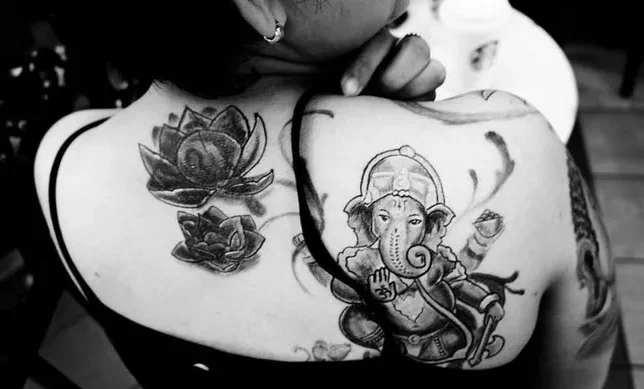Tattoos have been a part of human culture for millennia, serving as markers of identity, rites of passage, and expressions of individuality. As the popularity of tattoos has surged in recent years, so too has the curiosity about the artistic process behind them. One question that frequently arises is whether tattoo artists create their own designs or rely on pre-existing images. In this article, we delve into the world of tattoo artistry to explore the intricate relationship between creativity, client collaboration, and artistic autonomy.
The Creative Process: From Concept to Skin
At the heart of every tattoo is a creative vision. Whether it’s a small symbol with deep personal meaning or an elaborate sleeve depicting a narrative, every tattoo starts with an idea. For many tattoo artists, this process begins with a consultation with the client. During this initial meeting, the artist listens to the client’s ideas, gathers inspiration, and discusses the practicalities of the design, such as size, placement, and color.
From there, the artist may sketch out rough concepts or create more detailed drawings to present to the client. These sketches serve as a starting point for further collaboration, allowing the client to provide feedback and request revisions. This back-and-forth exchange is crucial in ensuring that the final design reflects the client’s vision while also showcasing the artist’s skill and creativity.
For some tattoo artists, particularly those who specialize in custom or one-of-a-kind designs, the entire creative process is done in-house. These artists take pride in their ability to translate a client’s ideas into unique and personalized artworks, often drawing inspiration from a wide range of sources, including traditional art, pop culture, and nature.
Collaboration and Client Input
While many tattoo artists are adept at creating original designs, collaboration with clients plays a significant role in the creative process. Clients often come to the tattoo studio with specific ideas or images in mind, whether it’s a favorite quote, a beloved pet, or a symbolic motif. In these cases, the artist’s role may involve refining the client’s concept, offering suggestions for improvement, and translating the idea into a cohesive design that works well as a tattoo.
In some instances, clients may bring in reference images or sketches that they want the artist to incorporate into the design. While this can provide valuable inspiration, it’s essential for the artist to adapt these references to suit the unique characteristics of tattooing, such as skin tone, texture, and anatomy. This process requires not only technical skill but also a keen understanding of how different elements will translate onto the skin over time.
The Role of Flash Art and Stencils
In addition to custom designs, many tattoo studios offer a selection of pre-drawn designs known as flash art. These designs, typically displayed on the walls or in portfolios within the studio, range from classic motifs like roses and skulls to more contemporary styles like geometric patterns and watercolor splashes. While some tattoo artists specialize in creating their own flash art, others may purchase designs from reputable sources or collaborate with other artists to expand their collection.
Flash art serves several purposes within the tattoo industry. For clients, it provides a convenient option for selecting a design without the need for extensive customization. For artists, it offers a way to showcase their style and skill while also providing a steady stream of income. However, it’s important to note that flash art is often used as a starting point rather than a finished product. Artists may modify or customize flash designs to better suit a client’s preferences or incorporate them into larger, more intricate pieces.
Artistic Autonomy vs. Client Expectations
One of the unique challenges faced by tattoo artists is striking a balance between artistic autonomy and client expectations. While artists bring their own style, technique, and creative flair to each tattoo they create, they must also consider the client’s preferences, cultural sensitivities, and practical considerations.
For some artists, particularly those with a strong personal aesthetic or artistic vision, this balance can be a source of tension. They may feel constrained by clients’ requests or pressured to conform to popular trends rather than expressing their true artistic voice. However, successful tattoo artists understand that collaboration is key to creating a satisfying experience for both themselves and their clients.
Conclusion
In conclusion, the question of whether tattoo artists draw their own designs is not a simple one. While many artists are skilled at creating original artworks from scratch, the reality is that the creative process often involves collaboration, adaptation, and compromise. Whether they’re working on custom designs, modifying flash art, or incorporating client input, tattoo artists bring a unique blend of creativity, technical skill, and client communication to every tattoo they create. Ultimately, it’s this dynamic interplay between artist and client that makes each tattoo a truly personal and meaningful work of art.

